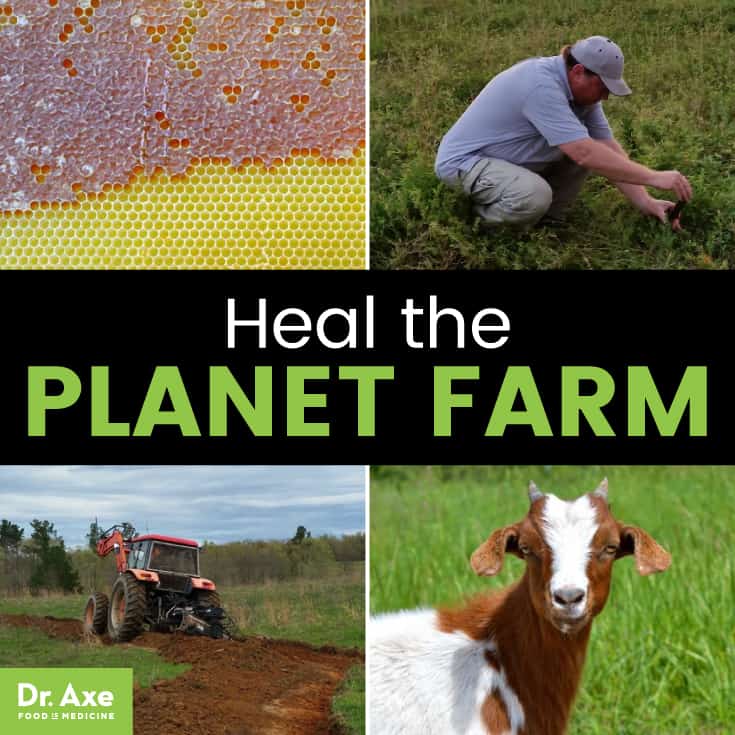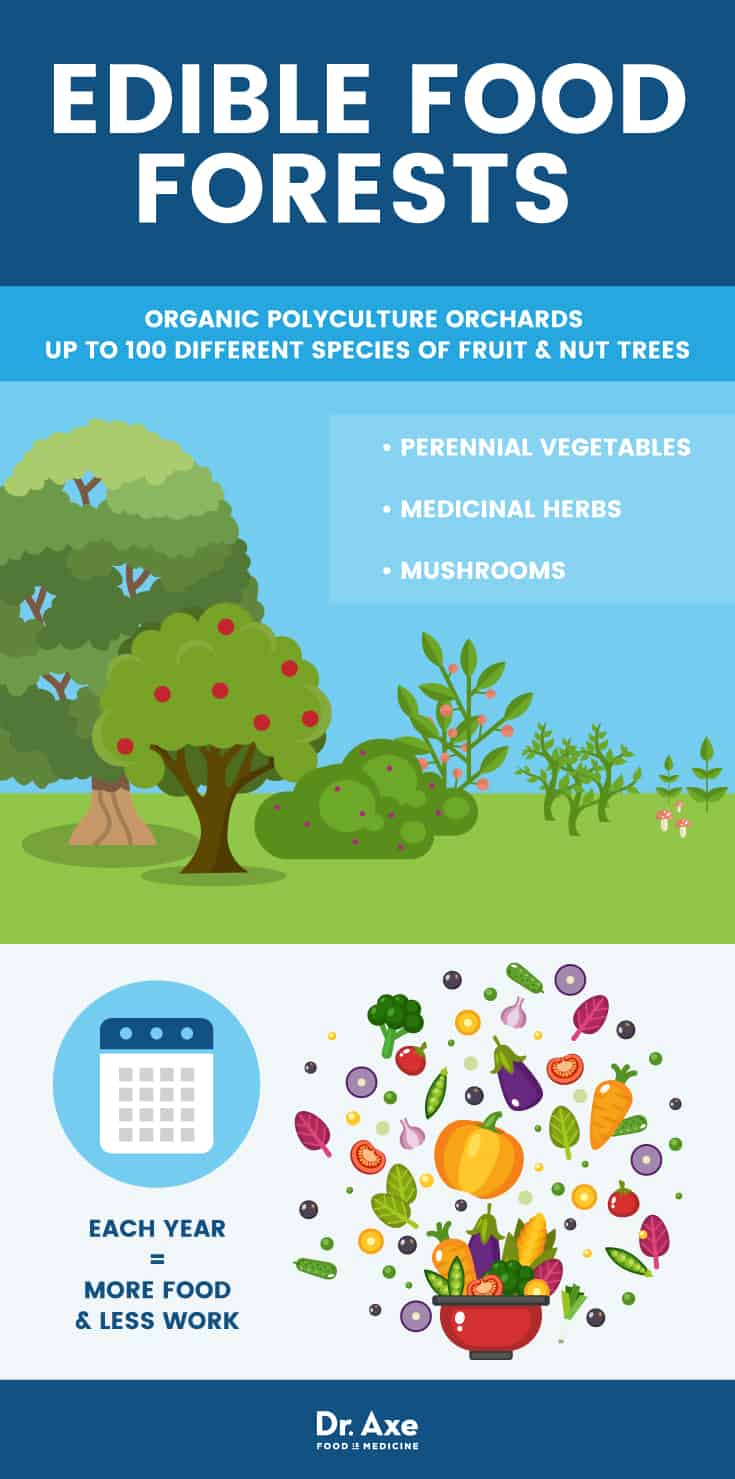Is it a hype or the ultimate answer to farmers’ plight, food shortage, and environmental challenges posed by industrial agriculture? An analysis by Down To Earth.
At first glance, the farm resembles a hurriedly laid out landscape where unintended vegeta tion and overgrowth have set in following a long neglect. Located in Telangana’s Pasta pur village, the farm has stretches of bushes interspersed with trees of custard apple, passion fruit, teak, almond, gooseberry, moringa and so on; the tree trunks tightly embraced by twisted vines and branches adorned with beehives along with fruits. Poultry birds play on a bullock cart as rabbits peep through fronds of the thick undergrowth. At places, safflower, mustard, lentils, flaxseed, onions and tomatoes grow in smaller patches in perfect harmony with weeds. In one corner, a few tree stumps are being fed on by termites. But Narsanna Koppula, who runs the farm, says an order underlies this randomness, and that’s the order of permaculture.
The farm, spread over 10 acres (a little more than 2 hectares), is home to at least 100 varieties of plants. They are all being grown keeping in mind a design that facilitates coexistence of competing species and perennials with seasonals, and ensures that the farm makes the most of the ecosystem services, such as sunlight, wind and rain, says Koppula, who also spreads awareness about permaculture under non-profit Aranya Agricultural Alternatives. For example, he adds, all tall trees on the farm are confined to the western and southern boundaries and the eastern side has been left open. This ensures that the other plants and crops remain protected from the harsh afternoon heat and strong winds while benefitting from the morning sun.
At places, species like teak, tamarind, black plum and casuarina have been planted on the west in rows so that they act as windbreaks and guard the semi-arid soil against erosion. The field of sorghum is interspersed with nitrogen-fixing crops such as safflower, lentils and chickpea so that they fulfil the nitrogen requirement of sorghum plants. They act as green manure and ensure soil fertility. Even weeds are allowed to thrive as they can be used as mulch. Local grasses, which grow in abundance, are used for thatching and as fodder. “At the heart of permaculture lies the idea that a plantation should offer multiple benefits, right from food and fodder to timber and fertiliser,” says Koppula, who has been practising permaculture for 30 years.
The concept is not new. It was first prop-agated in the 1970s by Australian biologist Bill Mollison. It gained acceptance in India after several enthusiasts were influenced by Mollison during his visit to the country in 1987. According to Mollison, permaculture is the “conscious design and maintenance of agriculturally productive ecosystems which have the diversity, stability, and resilience of natural ecosystems. It is the harmonious integration of landscape and people providing their food, energy, shelter, and other material and non-material needs in a sustainable way.” Mollison passed away in September 2016. By then his idea had grown into a movement and spread to 140 countries. Today, more than 3 million people across the globe practise permaculture, and claim that the novel farming system is the only way to make agriculture sustainable in the face of extreme weather events such as recurrent droughts and unprecedented floods, land and soil degradation due to excessive use of synthetic fertilisers and manure, and a growing population.
A farm for the future?
In 2009, the UN gave a call to scale up food production to feed the global population, which is estimated to reach 9.1 billion by 2050, with 70 per cent of them living in urban areas. In such a scenario, Koppula says, it is imperative to produce more with less resource, build resilience among small farmers, improve soil health and encourage people to grow their own food. And all these can be achieved through permaculture, he says, adding that the food grown on 0.5 ha of the Aranya farm is sufficient to meet the year-round needs of his family of four.
“The fear that there may not be enough food to eat by 2050 is a conspiracy devised by international organisations and governments. Our conventional agriculture system focuses only on a few market-driven crops. Over the period, consumers too have restricted their choices to those cereals and pulses,” says Koppula. Padma Koppula, who helps Narsanna in running the farm, adds: “We have stopped looking at what nature has to offer us and neglect a wide variety of foods. For instance, we only consume five to six of the 40-50 varieties of pulses that were once available in the country. Several wild and uncultivated foods, such as tubers, millets and fruits, which continue to be the source of nutrition for tribal and forest dwelling communities, have got sidelined from our food basket.”
Since the principles of permaculture discou rage monoculture, it opens up the opportunity for growing a wide variety of grains, fruits and vegetables, and widens one’s food basket.
Permaculturists claim that the benefits go beyond achieving self-sufficiency in food. For example, the farm generates manure for the soil, thus saving on fertiliser cost. “In chemical farming, the focus is on feeding the crop using synthetic manure. But in permaculture, or any other non-chemical agriculture practices for that matter, emphasis is on nourishing the soil which in turn keeps nursing the plants,” says Sultan Ahmed Ismail, a soil biologist and ecologist who runs Ecoscience Research Foundation (ERF), a non-profit based in Chennai.
Permaculture also helps curtail expenses on labour. “Perennial plants are integral to a permaculture farm. Since they do not require regular tending, one can plant cleverly to counter labour shortage by planting perennials on a large part of the farm. In Aranya, 75 per cent of the plants are perennial,” says Padma Koppula. Clea Chandmal, a permaculturist in Goa, leaves her farm untended even during the monsoon which is potentially the most damaging time of the year for crops. “Permaculture allows farms to weather harsh conditions just the way forests would do,” says Chandmal.
Little quantification of yields has been done for permaculture farms, which makes it difficult to judge whether this agricultural system can replace conventional farming and would be able to feed the world. But permaculturists are optimistic.
Malvikaa Solanki, a permaculturist in Gundlupet taluk of Karnataka, who propagates the idea through non-profit swaYYam, says while conventional sunflower seeds have 30 per cent oil content, the seeds grown on her farm are sturdier and bigger in size and have 40 per cent oil content. “I also harvest 700-1,000 kg of peanut from an acre (0.4 ha), whereas the average yield of the country is 1,066 kg per ha,” says Solanki, who harvests enough cowpea, green gram, pigeon pea from her 2 ha farm to feed her family round-the-year.
When asked whether permaculture can help India feed its 200 million food insecure population, the largest in the world, Solanki says hunger is related to both quality and quantity of food. Nutritive values are highly compromised in today’s food. “The problem lies not only with production but also with distribution of food. But no one talks about the huge amount of food that gets wasted every day,” she says. In permaculture, the focus is not only on ensuring food security, but also on ensuring diversity of food, seed security, nurturing of the ecosystem and, more importantly, protecting health of communities.
While the idea is seductive with promises of both bounty and sustainability, a seemingly obvious bottleneck is that not all ecosystems are equally productive. For example, a farm in the arid Vidarbha region cannot be as productive as Chandmal’s farm in the rainforest. But Chandmal claims that one can improve productivity of the farm irrespective of the ecosystem by introducing the right design. “Ecosystems may appear poles apart but there are similarities between compo nents that make up the ecosystem and the way they function. For example, all ecosystems host a variety of bacteria, fungi and soil-dwelling microbes. So one needs to select plants that can adapt to these components and satisfy human needs,” she adds.
Although Chandmal is confident of the science, she is reserved about the potential of permaculture in future food production. “I can tell you from my experience that the system is powerful. But its future depends on factors other than science because this is an industry with political and economic implications,” she says.
Lack of data undermines hope
Like Chandmal not everyone is optimistic about the potential of permaculture. “Permaculture is not a magic bullet,” says Debjeet Sarangi of Bhubaneswar-based non-profit Living Farms. “How can it feed the world at a time when we are taking away land, cattle and seeds from the farmers,” he asks. “Besides, most experiments so far have been limited to personal consumption. There is nothing to show that it would work at a commercial scale,” he says.
Satya Raghu, who runs Kheyti, a farmers’ group in Hyderabad, says the farming practice is not suitable for small farmers who depend on agriculture for a living. “Since production from a permaculture farm is limited, the farmer will have to make a trade-off between hunger and principles,” says Raghu. It would therefore be wrong to depend on permaculture, organic or natural farming to feed the world population, growing at an unprecedented scale, he adds.
A food expert, who did not wish to be named, says in permaculture the idea is to create a food forest. But the forest ecosystem is radically different from that of an agricultural field, which requires a refined ecosystem. So, mimicking the forest to produce food is like tampering nature, he says. The government can at best introduce a policy on permaculture as way of protecting land, he says.
Uma Maheswar Rao, principal scientist (agriculture division) with the Indian Agricul tural Research Institute in New Delhi, says permaculture is meant for small or slightly bigger ecosystems and is thus not enough for food security. In fact, all alternative farming systems, including permaculture, organic farming and non-pesticide management methods, emphasise on using local resources and not disturbing the local environment. “Since agriculture is region-specific, we cannot have a blanket solution for every place. So, it is better to let everything flourish. Even monoculture has its own advantage. Though it invites more pests, it plays a critical role in creating buffer stock of cereals,” Rao explains.
Shyam Khadka, India representative of the Food and Agriculture Organization (FAO), says the philosophy of permaculture is relevant in the current ecology. But displacing the Green Revolution agriculture with permaculture as the sole methodology for production at this stage is difficult. “We also do not even have so much land required for permaculture. However, striking a balance between permaculture and the Green Revolution agriculture is necessary,” he says. Permaculture can make the Green Revolution agriculture more sustainable and help feed the large urban non-farming population, he adds.
“Many alternatives suffer because of ideological fixations. So adapatation is important. Without it, permaculture will remain an elite concept,” says G V Ramanjaneyulu of Hyderabad-based Centre for Sustainable Agriculture, adding that integration of different agriculture models is important for the success of agriculture as a whole.
Can it resurrect environment?
Just like the dearth of information on food production, little work has been done to assess the impact of permaculture on ecology. Alfred Szilágyi from the Szent István University in Hungary and Immo Fiebrig from the Coventry University in England are in the process of assessing whether permaculture is sustainable. The results of the assessment are yet to be made public. Fiebrig says the best explanation for the lack of research on the subject probably is that the concept and practice of permaculture spread around the world through non-academic, grassroots or anarchic routes, carried by the “hippie movement” of the 1970s. “Permaculture is entering scientific debate only now and is being looked at mostly from the social sciences perspective as a socio-political movement of the Global North and people—mostly with a non-farming background like me—who are dissatisfied with the modern society,” Fiebrig adds.
Some say permaculture can also help deal with global problems such as climate change. Is this a hype or real potential of the farming system?
It is estimated that at least 50 per cent of the carbon in the soil has been released into the atmosphere over the past centuries. Some environmentalists say permaculture could be a way to bring this carbon back to the soil. Recently, American environmentalist, author and activist Paul Gerard Hawken proposed a comprehensive plan to reverse global warming through his project Drawdown. Hawken estimates that the increase in regenerative agriculture (which has some aspects similar to permaculture) from the current 43 million ha to 400 million ha by 2050 could result in a reduction of 23.2 gigatonnes of carbon dioxide, from both sequestration and reduced emissions. This is equivalent to 65 per cent of the world’s carbon emissions in 2015.
But all experts agree on one aspect of permaculture: its power to rejuvenate soil. In this system of farming, land is not cleared by burning. Rather, mulching is practised as a rule. Even roots of plants are left in the ground to degenerate naturally. To ensure a rich biodiversity in their arid farm in Andole village of Telangana’s Sangareddy district, Supriya and Anil Gaddam recently collected saplings from government and private nurseries of the region and used those as mulch for growing the first cycle of plantation. The mulch keeps feeding moisture to the roots of fruit trees, which have now reforested another 2.8 ha of the farm, with the promise to give plenty of fruits in a few years. As per the rules of ecology, animals play a key role in the regeneration of a healthy ecosystem. So chickens, bullocks and cows have also been integrated in everyday activities at the farm. While the chickens provide eggs and enrich compost for plants with their excrement, the bullocks help in ploughing the fields.
Upbeat despite scientific validation
The need for scientific validation of this neo- farming system was pointed out by Mollison as far back as 2005 in an interview: “I know a Filipino man who always plants a chili and four beans in the same hole as the banana root. I asked him, ‘Why do you plant a chili with the banana?’ And he said, ‘Don’t you know that you must always plant these things together.’ Well, I worked out that the beans fix the nitrogen and the chili prevents beetles from attacking the banana root.”
Despite lack of research and government support, permaculturists are using common sense to fight problems that ail the country’s agriculture sector. For example, Aranya does not have an irrigation facility and depends on rainfall. It manages the problem of water shortage through rainwater harvesting. “In semi-arid areas, water harvesting is the only source of water for crops and for retaining soil moisture. Contour bunds across the farm help in proper distribution of water across the farm and recharge of water table. We also have a water purification system where grey water from the kitchen is treated and recycled for irrigation,” says Narsanna Koppula.
Supriya and Anil Gaddam have turned their barren farm into an oasis in the arid region by setting up water harvesting structures, such as swales, trenches and percolation tanks. These structures have now recharged four borewells in the village that had run dry. “We also grow water-efficient crops, such as millets, wheat, mangoes and guavas, to efficiently manage the water resources. The Singur Reservoir that supplies water to Hyderabad and its surrounding areas is next to our 38-ha farm. But we have not taken a drop from the reservoir since establishing the farm some 15 years ago,” says Anil Gaddam.
Understandably, practitioners are upbeat about this newfound farming system. Rosemary Marrow who runs a permaculture farm in Austra lia says, “Permaculture is the most promising alternative we have. This is because it is adaptable to all environments, from 10-storey buildings and balconies to large farms and is based on ethics and principles.” It is not possible to compare a monoculture with a highly productive cultivated ecosystem because scientists find it difficult to value. For instance, how can one compare year-round food availability, timber availability and reduced pest infestations with just 2.5 tonnes of rice per hectare. “We are yet to put a value on several benefits that a permaculture farm provides. Some of those are windbreaks, round-the-year flow in the river and soil moisture in a dry season,” she says. Maybe, we can gauge the value of permaculture by estimating the cost of damage caused by industrial agriculture to the environment and the future, she suggests.
Permaculture makes more sense when one keeps in mind the harms caused by conventional agriculture, such as increasing soil salinity due to intense chemicals, high demand for water and the lack of organic matter in the soil.
ERF’s Ismail lists the benefits of permaculture practices. It does not assault the soil system and takes care of water management. It not only provides food and nutrition security but also ensures farmers’ livelihood and land security.
Chandmal insists that permaculture relies almost entirely on science, but this science is way different from the currently accepted norms of agricultural sciences. “Agricultural science today has had the unfortunate outcome of separating the farmer from the soil, which is the life source for any plant. It is the most critical, yet least understood aspect of agriculture that has been reduced to just a few nutritious components (nitrogen, phosphorous and potassium) which are periodically supplemented inorganically without bearing in mind that there is already a natural system in place to fix the soil with these components,” she explains.
Permaculture holds promise for subsidence farmers. But they will shift only if they have access to native seeds, given the knowhow to manage labour, and are demonstrated the success of the farming.
—With inputs from Ayush Shukla
http://www.downtoearth.org.in/coverage/new-civilisation-primitive-wisdom-59125
On – 30 Nov, 2017 By Conversations











































































